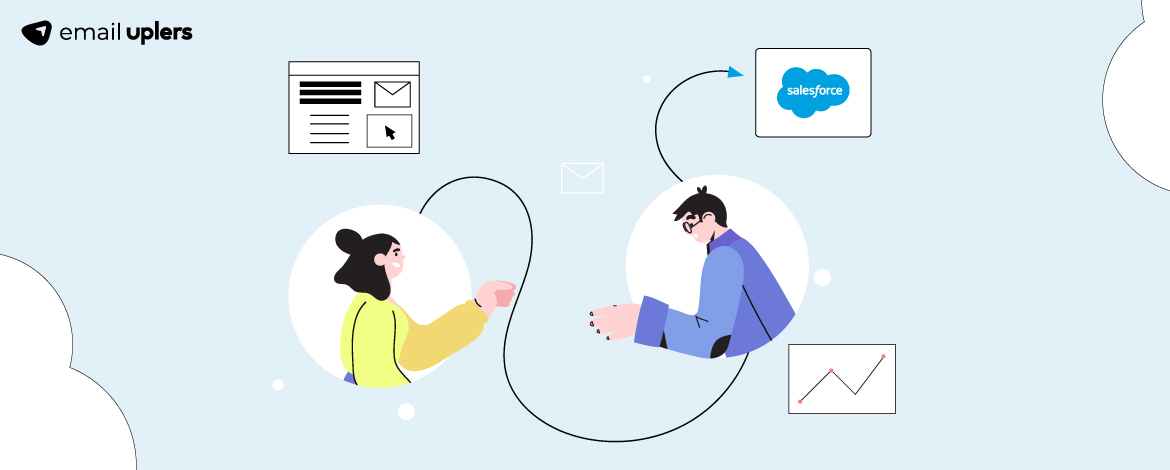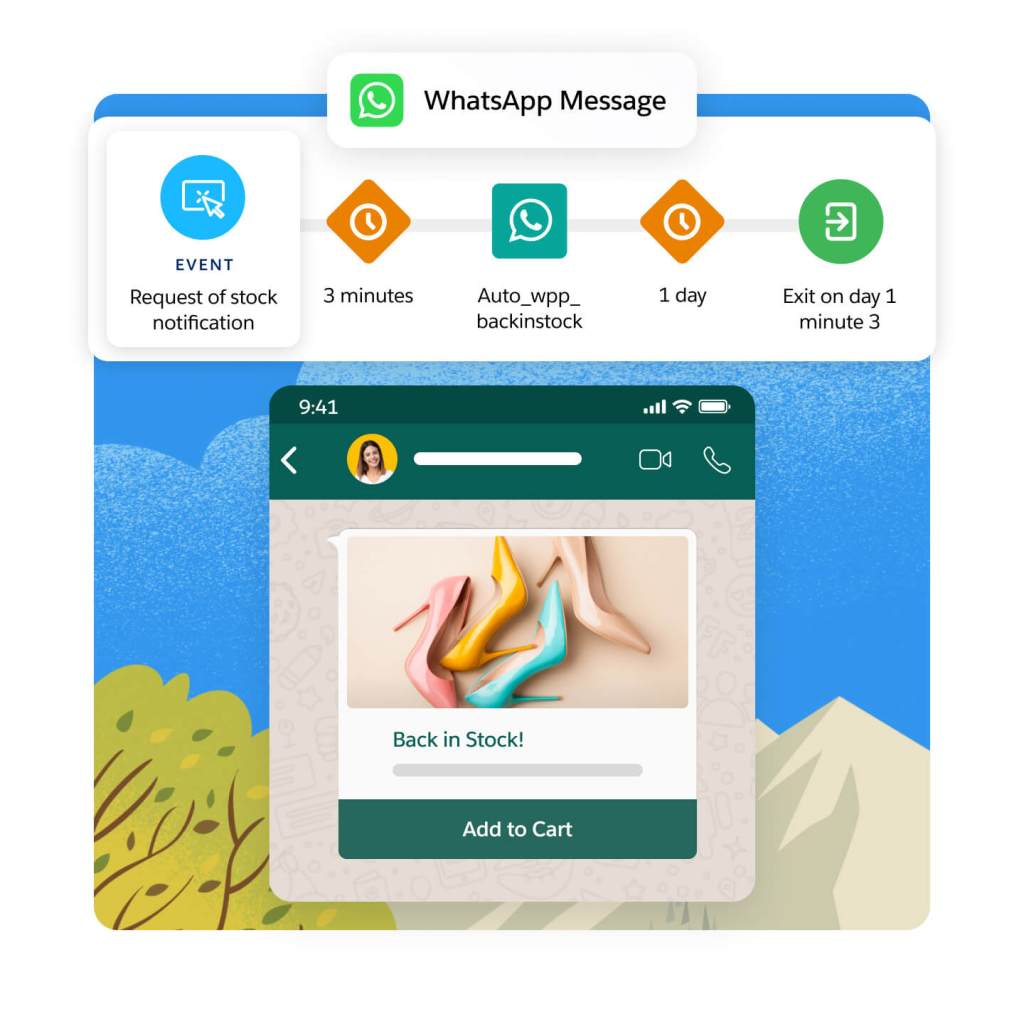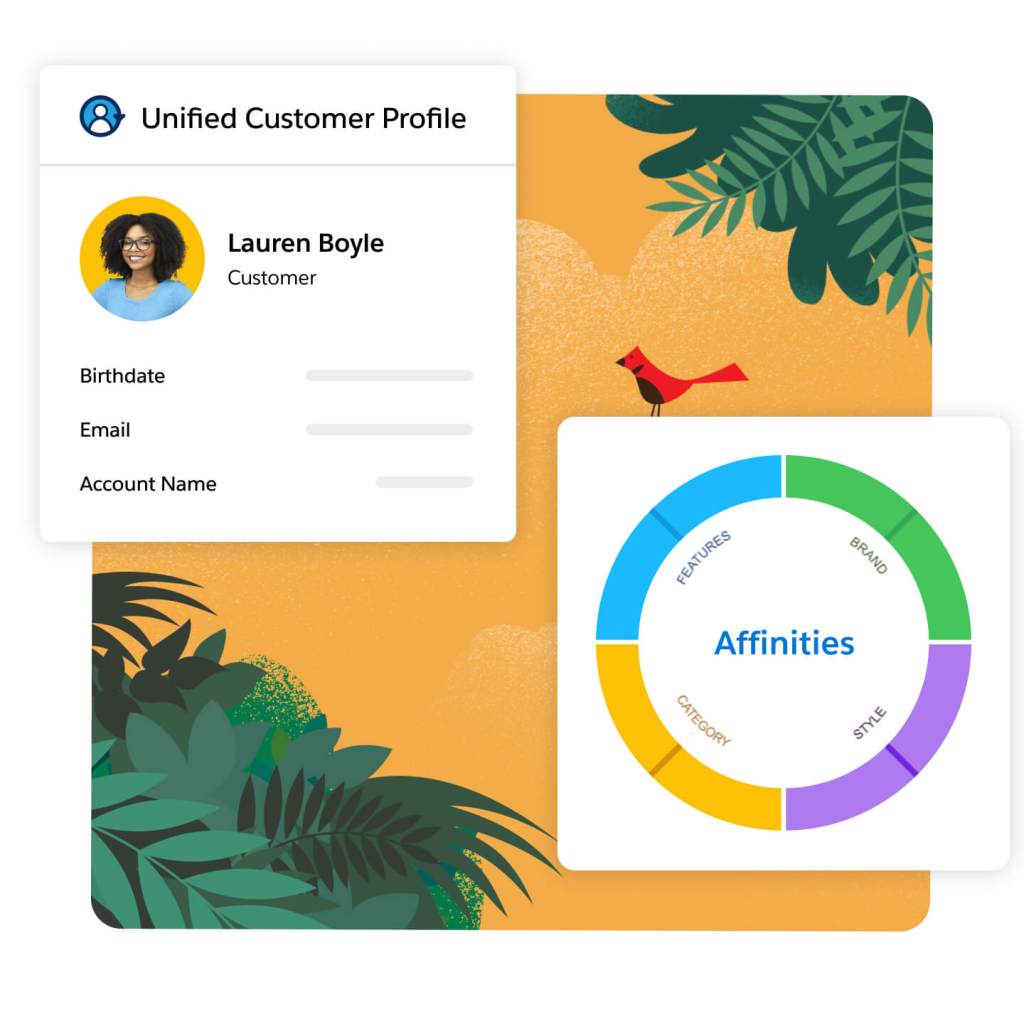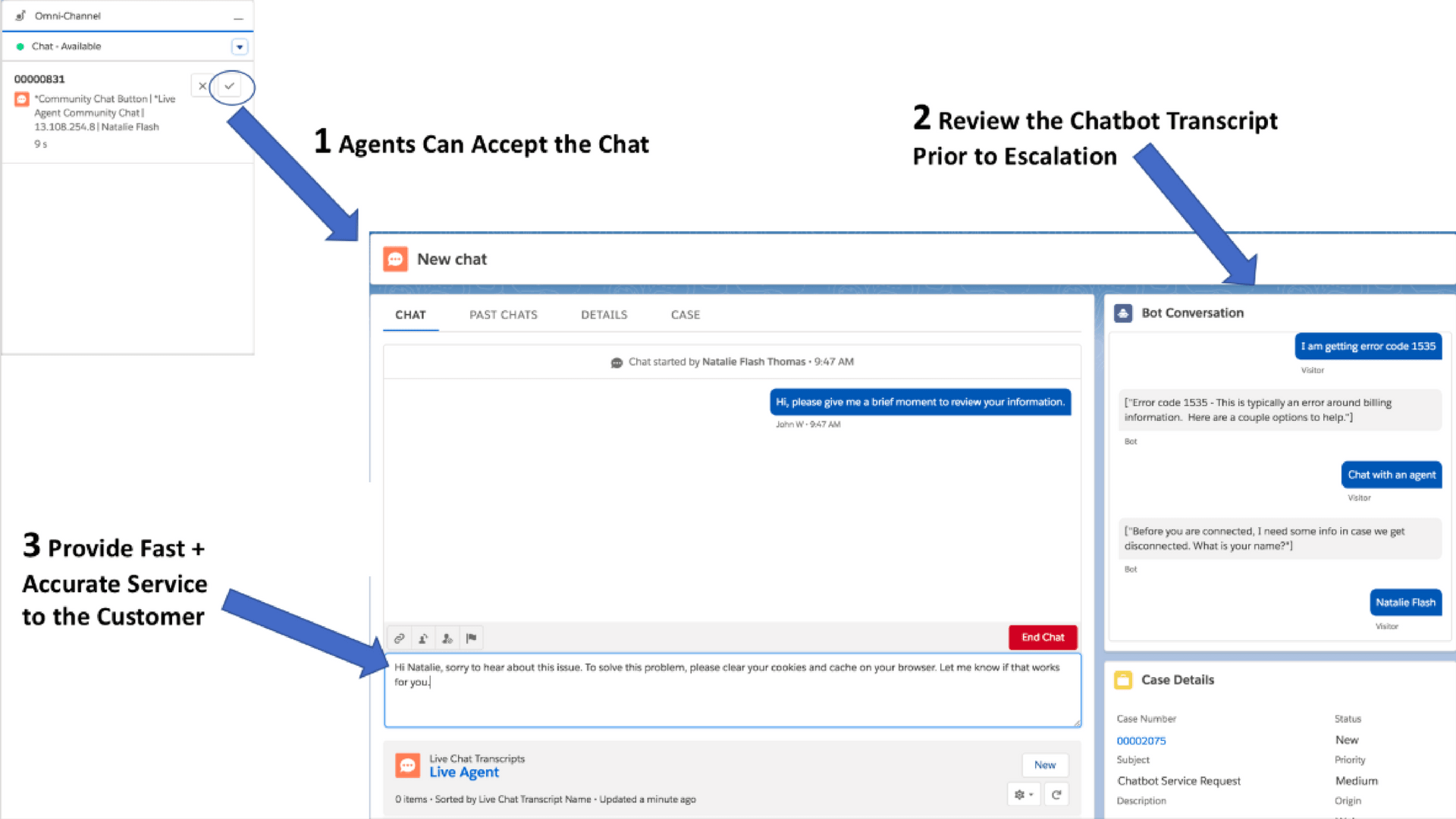As a marketer, here’s what you do know.
You know your business. You know the products/services you aim to offer. You know your target audience. But do you know the individual customer to whom you are selling your wares? How well do you know them? How far could you know them?
Consider the following illustrations from SFMC. The first one depicts conversational mobile messaging, the second one, real-time affinity profiling.
In the first image, the customer receives a Back-in-Stock notification on their preferred channel (WhatsApp in the present case). The second image shows the customer’s profile, their personal details, and their interests and motivations as deduced from a psychographic analysis of their behavior.
That’s how well, and how far, the customer can be known. And there you have conversational marketing with Salesforce in full steam.
Your customers demand your brand revolve around them, their needs, their desires. How do you know what they need or desire? By conversing with them! How do you converse with them? And how often?
But let’s take it one conversation at a time, beginning from the beginning, followed by conversational marketing examples, and benefits.
What Is Conversational Marketing?
Conversational marketing is a dialogic engagement with the customer with a view to identify their pain points and offer prompt, relevant solutions.
By conversing with a customer, you learn what they want, why they want it, and how they want it. You get to know the customer better; your perspective gradually develops fine striations; you are ultimately set to offer highly personalized solutions.
This trilateral approach to engaging with your customer works insanely well. Still, let’s catch some numbers to really nail it home:
- 71% of consumers expect personalized interactions with brands. 76% are put off when this expectation is not met. (Source: McKinsey)
- 52% of consumers are more likely to buy again from a brand that offers live chat support. (Source: Kayako)
- 80% of general questions can be answered via AI chatbots. (Source: IBM)
- 83% of consumers say they are loyal to a brand that offers a chatbot for making customer service inquiries. (Source: Marketing Dive)
- Eight in 10 businesses confirm that by using live chat services they’ve witnessed growth in sales and customer loyalty. (Source: Kayako)
- 69% of customers like chatbots for their quick responses. (Source: Salesforce)
- 62% of customers expect companies to adapt themselves in accordance with the latter’s behavior and actions. (Source: Salesforce)
- 72% of B2B customers expect a B2C-like experience in their interactions with brands. (Source: Accenture)
Now that we have more than answered the question “what is conversational marketing?”, let’s take a detailed look at the foundational concepts of the same.
Conversational Marketing Concepts
In order to have a solid conversational marketing strategy in place, we first need to understand what conversational marketing involves.
- Real-time Customer Engagement: Real-time engagement (RTE) is not the same as real-time communication (RTC). After all, communicating is not the same as engaging. To engage with the customer is to identify with their context and communicate accordingly.
That’s exactly when you have begun conversing.
- Personalized Interchange: You are not conversing with the persona, you’re conversing with the person. It really is the heart of conversational marketing.
You extract value from customer data and align your conversations with individual customers according to their personal/preferred narratives. In fact, that’s what makes conversational marketing with Salesforce particularly useful, since it’s 24-karat data driving it.
- Machine Learning (ML) and Artificial Intelligence (AI): We saw how efficient chatbots can be when it comes to conversational marketing. No one likes to banter with a bot. However, thanks to AI, bots can give correct, context-relevant, and insightful responses to customer queries.
Salesforce has their own chatbot functionality called Einstein bots. Einstein uses Natural Language Processing (NLP) and Machine Learning (ML) to train chatbots to communicate with customers on the basis of a learning model. This helps chatbots simulate human conversations, and interact with customers in real time.
By analyzing keywords and intent in the customer’s questions, the bot responds intelligently, improving its responses according to feedback provided by the customer.
You can also use chatbots provided by third-party developers on Salesforce’s AppExchange. Below is an illustration of the Salesforce-integrated Google Bot in action.
Conversational Marketing And Customer Loyalty
In light of what conversational marketing is and can do, it is not hard to see how it can foster customer and brand loyalty. The degree to which the customer is enriched by your services is directly proportional to how loyal they become.
But why rest upon the abstract when we can study real-world conversational marketing examples? So, let’s look at a Salesforce case study to understand how conversational marketing paves the way to customer loyalty.
John Lewis Partnership, a retail chain and the largest employee-owned business in the U.K., turned to Salesforce to centralize data across their stores.
The company used Service Cloud to help both online and offline shoppers. Salesforce’s Service Cloud is a CRM platform that helps businesses to manage customer relationships, and resolve customer issues. It is equipped with tools for case management, multi-channel support, automation, and analytics, all translating into better customer experience.
With the help of Einstein bots, John Lewis Partnership were able to fast-track responses to customers on their preferred communication channels. The company also used Visual Remote Assistant to streamline interactions between customers and agents.
Visual Remote Assistant helps businesses connect with customers over video and provide real time solutions. The software can be integrated with your CRM.
So whenever they registered a customer complaint, a John Lewis Partnership agent could address the issue directly online, instead of having to deploy a field staff. It saved time and resources for both the agent and the customer.
As per Salesforce’s report, the use of Service Cloud and Visual Remote Assistant helped John Lewis Partnership save a bumper £1 million in annual call center costs.
Equally, with the help of Marketing Cloud-based email and SMS campaigns, John Lewis Partnership increased their production time by 75%. In fact, they could build marketing campaigns in just 24 hours, enabling them to meet customer requirements more quickly.
With automated tools at their disposal, John Lewis Partnership had more time to engage with their customers. Using Salesforce as a conversational marketing platform, John Lewis Partnership developed deeper relationships with their customers and succeeded in improving the customer retention rate.
If you are on the lookout for a reliable partner who can help you with conversational marketing in SFMC, our expert SFMC team can help you.
Benefits Of Conversational Marketing
Since conversational marketing is essentially and entirely customer-focused, one of the most notable benefits is reduced abandoned carts.
Usually, a brand sends out cart abandonment emails as reminders. It’s a one-way street though. The company doesn’t expect the recipient to respond to the email. Yet it does expect them to buy the dumped products as soon as possible.
But what if the customer hasn’t actually ‘forgotten’ to empty their cart? In that case, what’s the point of a ‘reminder’?
With the help of a good conversational marketing strategy, one gets to know why a particular customer chose to abandon their cart. They are given the opportunity to express their concerns. Now they are leading the conversation, which is the whole point of it.
Suppose a customer dropped off because they didn’t see their preferred payment option at checkout. How would you know that with a ‘Do Not Reply To This Email’ cart abandonment message? Creative email copy, interactive design, prominent CTAs etc. won’t get you anywhere. You must converse with the customer (on their preferred channel) and know their pain point.
Put simply, you converse to convert. Once they are satisfied with the solution, they are ready to clear the cart.
Another benefit is better upsells and cross-sells. Thanks to conversational marketing, you know your customer well enough to employ targeted messaging. You engage with the customer on their terms. As a result, you make them stay focused on your brand for a long time.
Wrapping Up!
Conversational marketing is still to reveal its more potent side, thanks to the increasing adoption of AI. Already brands are leveraging smart voice assistants such as Alexa to take customer experience to the next level. In the not-too-distant future, the marketing world may be ready to combine virtual reality and augmented reality to provide immersive experiences.
But that’s a conversation for later. Marketing as we understand it today is chiefly about turning the microphone over to the customer. And using Salesforce as a conversational marketing platform means cranking up the pitch. Remember: it’s not just making them feel heard, but actually hearing them out.
Speaking of which, let’s continue the conversation in the comments section!








Mrugesh Dabhi
Latest posts by Mrugesh Dabhi (see all)
Using Klaviyo to Supercharge Email Marketing - Exploring Tips, Tricks, and Integrations
Making the Most of Marketo Smart Campaigns- A Definitive Guide!